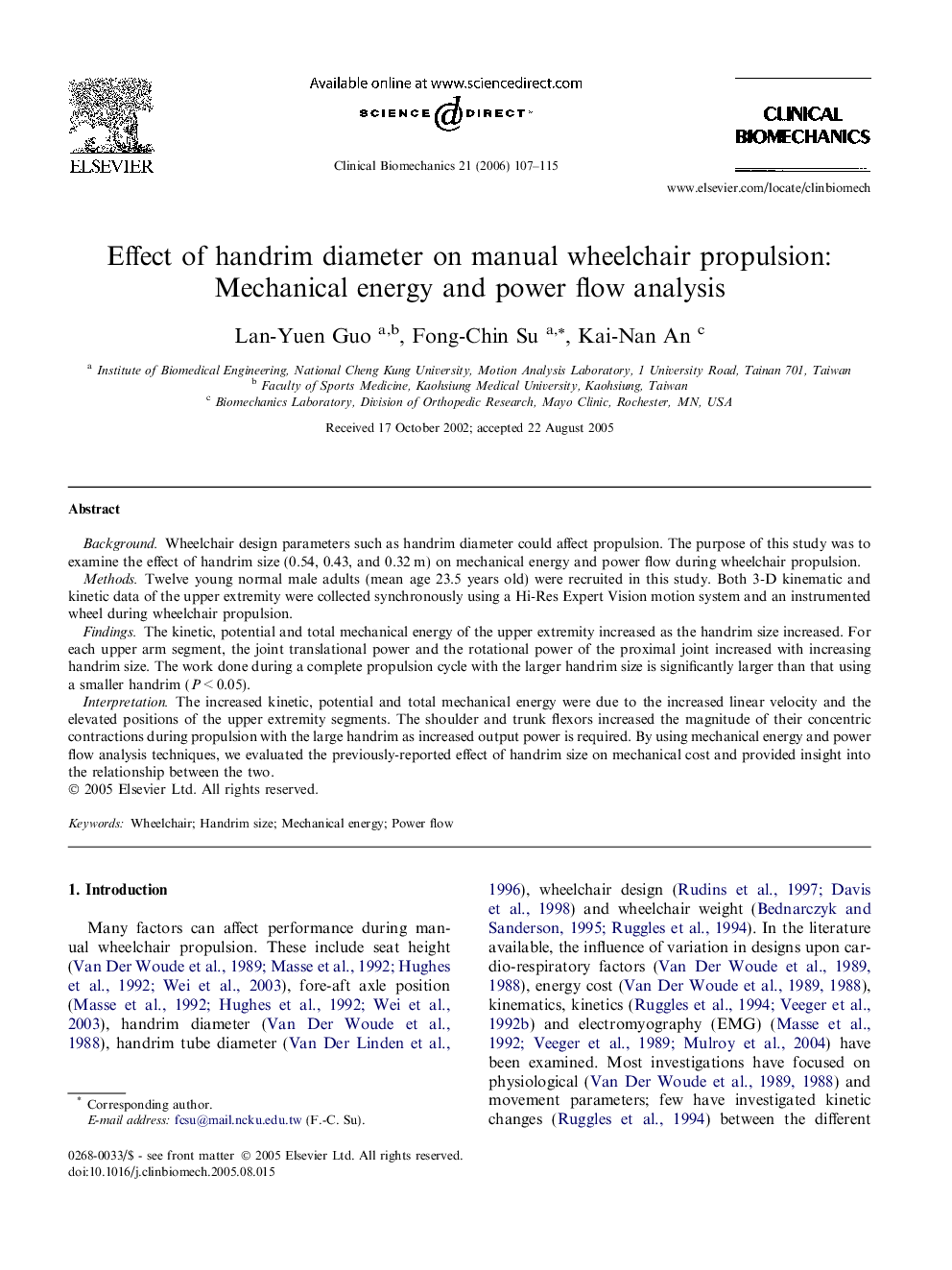| Article ID | Journal | Published Year | Pages | File Type |
|---|---|---|---|---|
| 4051769 | Clinical Biomechanics | 2006 | 9 Pages |
BackgroundWheelchair design parameters such as handrim diameter could affect propulsion. The purpose of this study was to examine the effect of handrim size (0.54, 0.43, and 0.32 m) on mechanical energy and power flow during wheelchair propulsion.MethodsTwelve young normal male adults (mean age 23.5 years old) were recruited in this study. Both 3-D kinematic and kinetic data of the upper extremity were collected synchronously using a Hi-Res Expert Vision motion system and an instrumented wheel during wheelchair propulsion.FindingsThe kinetic, potential and total mechanical energy of the upper extremity increased as the handrim size increased. For each upper arm segment, the joint translational power and the rotational power of the proximal joint increased with increasing handrim size. The work done during a complete propulsion cycle with the larger handrim size is significantly larger than that using a smaller handrim (P < 0.05).InterpretationThe increased kinetic, potential and total mechanical energy were due to the increased linear velocity and the elevated positions of the upper extremity segments. The shoulder and trunk flexors increased the magnitude of their concentric contractions during propulsion with the large handrim as increased output power is required. By using mechanical energy and power flow analysis techniques, we evaluated the previously-reported effect of handrim size on mechanical cost and provided insight into the relationship between the two.
